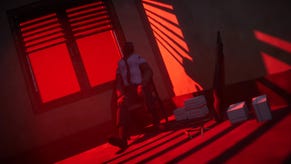Armored Core 6 sees FromSoftware reboot the series for fans, Souls players, and newcomers alike
Mech-ing a fresh start.
Forget the number in the title. Armored Core 6: Fires of Rubicon may be a return to FromSoftware's mech combat series, but it's also a new beginning, on a new planet, with a new story.
Yet the studio's legacy is impossible to ignore. There's not only the past Armored Core games, which went on hiatus after 2013's Armored Core 5, there's the more recent success of the Soulsborne games - Elden Ring in particular. How to bring back a cult series with a fervent following, but make it relevant to fans of more recent games and brand new players?
It's a delicate balance, but one Armored Core 6 is poised to attempt when it releases in August.
"As well as using our experience from recent years and combining this with the core elements of what we believe makes Armored Core special, this is still a brand new game and we want it to feel like a new mech action game that fits within the current climate of games," producer Yasunori Ogura tells me during a preview event.
"We don't want it to feel out of place. We've taken various strides to make sure it fits not only our own game design philosophy but will feel like a brand new modern action game in the mech genre. And so in that sense we want it to feel like a fresh start and a new first step towards what will hopefully be a successful future for mech action games."
So, for newcomers, what exactly is Armored Core all about?
Each game in the series has players embodying a mercenary who pilots a mech - the titular Armored Core units - through battles in a distant future. Despite the number, there have actually already been 15 Armored Core games and expansions, following its debut on the original PlayStation in 1997. The series is known for allowing players to construct battle mechs with deep customisation, as well as its lore-infused atmosphere, punishing difficulty, and methodical combat. How very FromSoftware!
However, this game is a complete reboot of the series. It takes place on the planet of Rubicon following a cosmic catastrophe that engulfed the planet in a fiery apocalypse. Years later, Rubicon is encased in a huge constructed shell where multiple factions and corporations fight for control over Coral, a rare material found only on this planet.
With Armored Core 6, FromSoftware wants players to experience a hard sci-fi world through the eyes of a lone enhanced human. Further, it aims to combine the customisation the series is known for with the studio's "action game philosophy", including smooth controls, expansive and dynamic maps, and a fulfilling sense of progression.
Gameplay footage I saw certainly embodies that hard sci-fi vision (see video above). Environments are predominantly detailed factories and facilities, metallic surfaces shining in the light of sunset or hidden beneath snow and ash. The action is explosive - literally and figuratively - as chunky, insect-like mechs strafe and swipe at one another beneath a rain of bullets and rockets. And tonally its world is as grim and punishing as you'd expect from the studio.
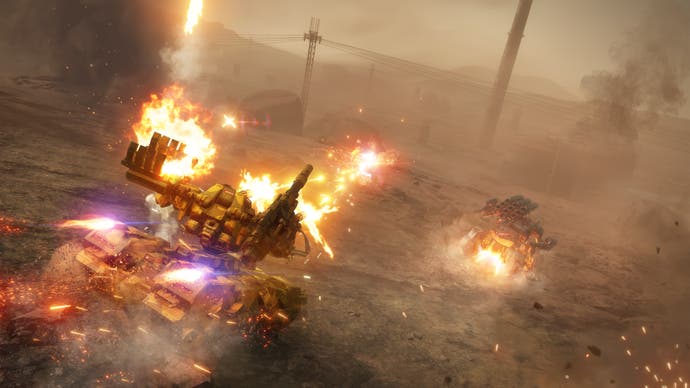
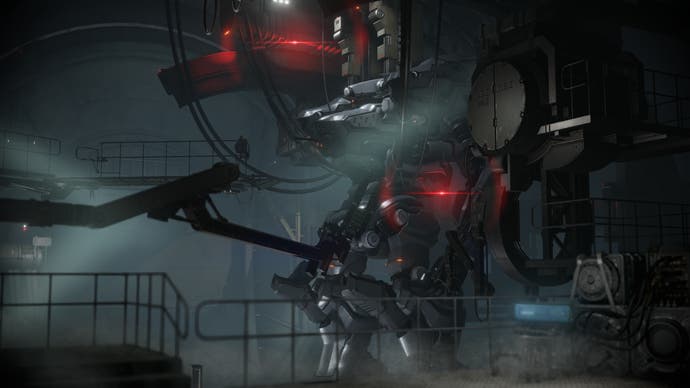
So why bring back Armored Core now, after the huge influence of the Soulsborne games and phenomenal success of Elden Ring?
Ogura says its return was inevitable. "We've obviously been cultivating staff members and our development process and our design philosophies over the past ten years and we've had various staff members across different titles, including myself and [studio president, Hidetaka] Miyazaki, who have always wanted to make another Armored Core. So there really wasn't any question of whether it was going to be made or not, it was just a question of when."
Armored Core 6 will retain the (forgive me) "core" of the series.
"Assembly, putting together your own unique mech and building out your own unique Armored Core, is obviously a fundamental part of this series," game director Masaru Yamamura tells me, "and what makes the game fun is creating this unique mech and taking it into battle and tuning it and swapping out parts in different ways, accumulating these parts, testing different weapons and combinations of weapons."
Evolving this core, he says, was a "challenging point in the game's development", but the team was able to lean on its action game expertise. For instance, swapping out leg parts and weapon parts has a real impact on both movement and combat beyond just numbers moving up and down. Now changes to parts impact the motion and behaviour of a player's mech and how enemies respond to that. Says Yamamura: "These things we wanted to be very tangible and very intuitive for the player to pick up and enjoy this time around."
I'm told that combat in this game will be fast, dynamic and tactical, with multiple approaches to success. It rewards careful yet aggressive play, with mechs able to transition seamlessly between ranged and melee combat.
This is just one example of how work on more recent games is ensuring Armored Core 6 fits within the lineage of the series and FromSoftware's output. Equally, many typical elements of Armored Core are inherent to FromSoftware and will likely appease Souls fans, including intricate level structures, calculating combat, and overcoming difficult situations.
"People think of our titles in recent years when they think of these elements but these are really things that have been present in our company philosophy and in our games for a long time previous to that," says Yamamura. "With Armored Core 6 we're trying to incorporate these elements in a way that does not taint the original qualities of what makes Armored Core what it is. We're trying to incorporate these elements in a way that lets them coexist and gel nicely with our modern game design philosophy and be understood easily by the player without spoiling that core concept of Armored Core."
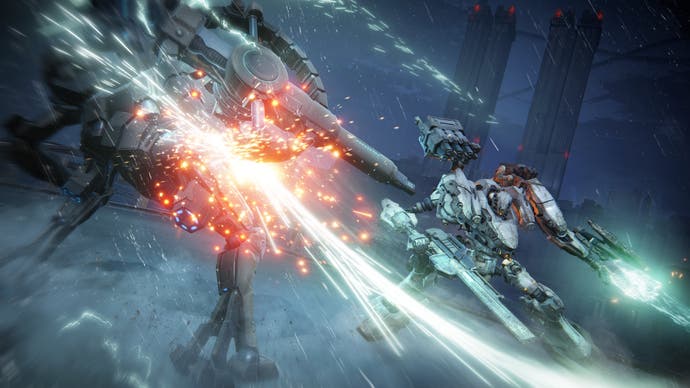
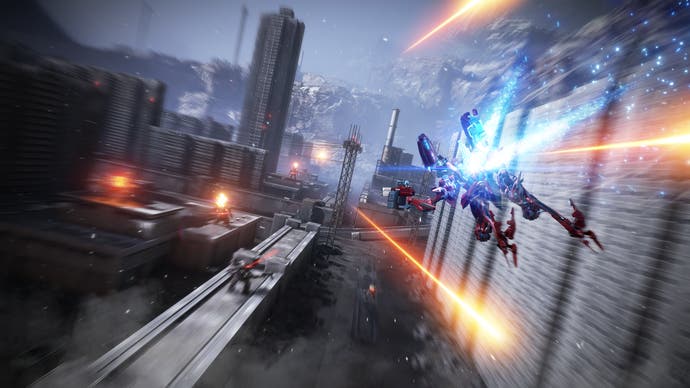
Yamamura's previous work as lead designer on Sekiro: Shadows Die Twice has also influenced Armored Core 6, albeit indirectly.
"While the base format of the Armored Core games and Armored Core 6 is very different from that of the Souls series and games like Sekiro," says Yamamura, "we have tried to incorporate some of that design philosophy and our experience over the last several years.
"I'd say some of that is definitely present in the aggressiveness of combat in Armored Core 6. We wanted to make something that was very visceral, very aggressive, and has a very clear and distinct rhythm or tempo to the combat. We want players to feel those highs and lows, fighting at near distance and far distance."
Another big addition to this game are giant, towering bosses, which reflects FromSoftware's penchant for impressive and challenging battles. These will act as the ultimate test to see if players can adapt their mech appropriately and learn attack patterns through repetition. The latest gameplay trailer shows some, quite frankly, terrifying looking colossal robots to battle, tying into the game's unprecedented (for the series) sense of scale.
Further, the controls will be modernised - something that was criticised in early games in the series for their complexity. Yamamura promises Armored Core 6 will have a "revised" and "more intuitive control scheme" compared with past games. What's more, this is in-line with making the game a more approachable experience to help expand its audience.
"As well as this improved control scheme, fundamentally this is a very complex game with many parameters at play and there's a lot of depth to it, especially when it comes to the assembly aspect," says Yamamura. "This is something we've been conscious of in development and we've carefully designed the onboarding aspect and especially the level design in the early stages of the game so that even new players can deepen their understanding step by step. This is an area in which we are very much aware that there were issues previously and we are trying to make it as appealing and intuitive to newcomers as possible."

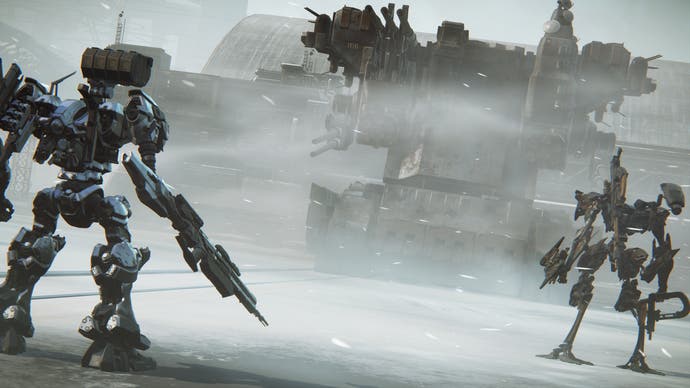
For those wanting complexity, though, that's also available. "There's a lot of potential for these thrilling and exciting and challenging battles once the player is engaged and once the player is introduced to the game, they're able to find that challenge and go up against that depth and complexity on their own terms," says Yamamura.
The team has eschewed some elements from previous games as part of this fresh start for the series. For instance, the first game included a debt system whereby players would lose money each time a mission was failed; more recently, Armored Core 5 experimented with an online world. For Armored Core 6, both of these are out.
"As a reboot we wanted to recall the best parts of Armored Core and really what made that series special," says Yamamura. "We felt like focusing on those single player elements and designing a challenging and exciting game that taps into our various areas of game philosophy and battle design. This is something that we had to leverage towards single player first and foremost."
And rather than a debt or death penalty - as the Soulsborne games play with - players are free to repeatedly attempt missions, but with "subtractions and detriments to the compensation that they receive and to their reward" as they complete objectives, explains Yamamura. The mission structure (rather than an open world) and retry points allow players to experiment with their mech build, with optimising their playstyle being a key incentive to progress.
As with other FromSoftware games, though, don't expect a big emphasis on story either.
"[Armored Core 6] is not really supposed to be a story-driven game but we feel like there is more of a drive to the narrative through the mission structure and we hope that players, as they encounter these various factions and powers at play, that they're going to be thinking to themselves 'what am I fighting for, what is my place in all of this? And how am I going to tackle these unfolding developments in the story?'" says Yamamura.
"This is one part that could be considered more direct storytelling, but also we feel like those fragmented elements of the story that the player is able to pick up and learn about the world and dive a little bit deeper into the lore, these elements are still present."
That story will be a "very indirect and almost cold depiction of human drama and conflict", hence the focus on mech, rather than human, customisation. Says Yamamura: "We hope that the player - whatever kind of player, however they identify - we want them to project themselves into that world and to become that pro mercenary in this brand new setting of Rubicon. We hope that they enjoy that slightly more indirect and lonely aspect to the storytelling and the protagonist's role in the story."

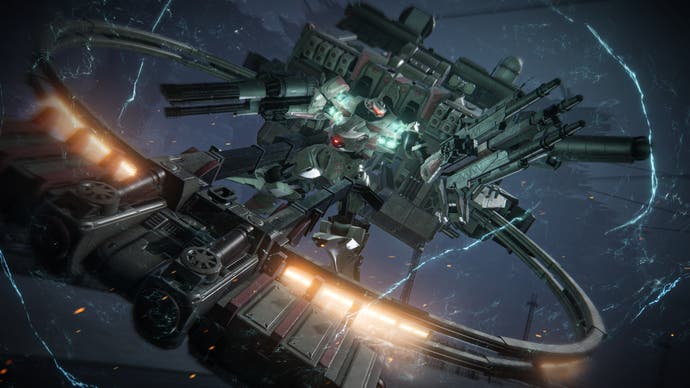
It's hard to tell how this will all work out without going hands-on. Yet it certainly seems like Armored Core 6 will provide a familiar experience for fans, with tweaks to combat, controls, and a more expansive, boss-filled world to modernise the series in a way Soulsborne fans will find appealing.
With Armored Core 6 making a return alongside the still-in-development DLC for Elden Ring, I asked if this was indicative of FromSoftware expanding and working on more games at once.
"This is a philosophy of ours that really hasn't changed all that much in the past ten years, particularly since Miyazaki has been president of the company," said producer Yasuhiro Kitao.
"This is an area we feel we've always strived to achieve: always making something new, always making something original, something that we find interesting and fun as players. So in this sense, really nothing much has changed. We do develop multiple titles simultaneously, we do have several teams working on different projects. We hope to stagger our releases and bring something new and exciting at hopefully not so long intervals going forward."
Armored Core 6: Fires of Rubicon is set for release on 25th August across PlayStation and Xbox consoles, plus PC.
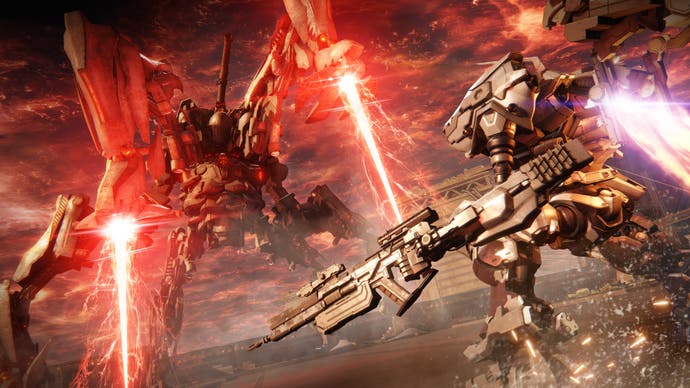


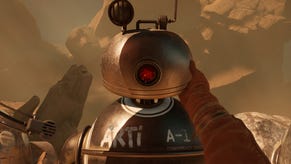

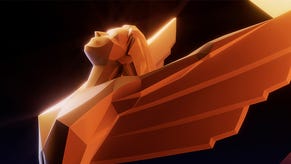
.jpg?width=291&height=164&fit=crop&quality=80&format=jpg&auto=webp)


.jpg?width=291&height=164&fit=crop&quality=80&format=jpg&auto=webp)
